Buyer's Guide: How to Choose a Wheelchair
Buying a wheelchair can be complex. This guide simplifies the decision process with everything you need to know to ensure the perfect choice.
Related ARticles
- The Continuum of Mobility: A Guide to Decreased Mobility
- Wheelchairs Buyer's Guide
- Mobility Aid Product Quiz
Did you know in the US alone, there are 3.3 Million Wheelchair users?
An estimated 1.825 million of those users are 65 and older.
If you or a loved one are struggling to walk, can't walk, or are recovering from surgery, you might consider using a wheelchair.
Wheelchairs offer total body support to keep a person active, able, and independent. They can provide freedom for those unable to walk and need a way to get around.
Aside from the physical benefits, wheelchairs can provide mental and emotional benefits as well, including:
- Reduced stress as they can get around more easily without worry of navigating long distances and rugged terrains
- Increased confidence as they can participate in activities
- Improved social life as they can get out and meet new people
However, choosing a wheelchair can be challenging. There are many different kinds of wheelchairs. The excess options available can make your decision overwhelming.
Rest assured, we've got you covered. By the end of this article, you'll clearly understand what's available and be ready to purchase a wheelchair that meets your needs and expectations.
Do I need a Wheelchair?
For starters, it can be challenging to decide if you need a wheelchair. Especially with the common misconception that only those who can't walk and require full-body support should use one. Contrary to this belief, there are many reasons someone might use a wheelchair.
For example, a wheelchair can benefit those:
- Who have trouble walking or are unable to walk
- Who are in significant pain while walking
- Who tire easily while walking or cannot walk long distances
- With paralysis or musculoskeletal issues
- With broken bones or injuries to the legs or feet
- With significant balance or gait problems
- With neurological issues
It's worth noting that wheelchair usage is not limited to full-time users. Many people use them on "bad days" or for long periods of standing or walking.
To determine if you should use a wheelchair, answer these key questions:
- How often do you struggle with daily tasks?
- How much do you miss out on due to illness, injury, or disability?
- Has your doctor recommended using a wheelchair?
- Does walking cause pain?
- Are you at risk of falling, despite using a walker/rollator?
If you've experienced a fall, struggle to get around (even with a walker/rollator), or are in pain when walking, you might benefit from using a wheelchair.
Your mobility is vital to having a good quality of life. You might be reluctant to start using a wheelchair. However, the mobility and freedom it provides far outweigh the cons of using it.
What to Consider
There are various factors to remember when buying a wheelchair, such as your needs, condition, and lifestyle. Be sure to consider the following to find the best wheelchair for you.
Measurements
The correct wheelchair dimensions are vital for two reasons:
- You want it to be comfortable to use
- You need it to fit in the most common places you visit
When looking at sizes, consider your body measurements so that every part of the wheelchair is comfortable and safe. For a more in-depth explanation, jump to the section on "measuring for your wheelchair."
Weight
When choosing a wheelchair, weight is vital to consider before purchasing. There are three weight-related components to consider:
- Your weight
- The wheelchair's weight
- And the wheelchair's weight capacity
You'll need a wheelchair designed to support your weight. For those needing heavy-duty support, a bariatric wheelchair may be ideal.
Depending on your lifestyle and mobility level, the weight of the wheelchair may matter. You may need a lightweight wheelchair to be picked up and placed in a car.
Frequency of Use
Full or part-time use can also affect your wheelchair choice. Part-time users who always have a caregiver to push them may only need a standard manual wheelchair. In comparison, full-time users may benefit from an electric or heavy-duty wheelchair.
How Often You Travel
If you travel frequently, you might benefit from purchasing a transport chair and standard wheelchair (or a 2-in-1). This gives you the option of a lighter and more portable mobility aid when needed.
Car Type
Your method of vehicle transportation will also impact your choice. You'll need your wheelchair to fit in the vehicle or trunk to transport you to different locations easily.
Outdoor Use
Frequent outdoor use can significantly affect your wheelchair choice. If you use your wheelchair on different terrains, you'll need a chair with more heavy-duty materials and wheels.
Cost
Wheelchair cost is an essential factor to consider. You'll not only want to consider the upfront cost of the wheelchair but consider the costs of maintenance and any replacement parts you'll need (be sure to check with the manufacturer if they offer replacement parts).
The cost of a wheelchair can vary depending on its type, materials, features, and more. Power wheelchairs tend to be more expensive than manual chairs.
You may also want to check with your insurance to see if they'll cover all or a portion of the cost.
Types of Wheelchairs
There are many types of wheelchairs for elderly and disabled persons. This section explains the difference between manual and electric and their varying types.
Power vs Manual Wheelchair
One of the first decisions you will likely make is whether a power wheelchair or a manual wheelchair is most suitable for you. This choice is usually decided based on a few of the factors listed above: strength, frequency of use, and car type.
Power Wheelchairs
Power wheelchairs are the best choice for those without much upper body strength. This includes those with severe paralysis or who will use their wheelchair most of the day. Rather than having to propel the chair by the wheels, power wheelchairs are easily controlled using a joystick on the armrest.
However, power wheelchairs are larger and significantly heavier than manual wheelchairs. So, power wheelchair users typically have a larger vehicle, such as a van or SUV, that can fit the chair inside. They are also more expensive and come with the added cost of a lift needed to place the wheelchair inside the car.
Manual Wheelchairs
Manual wheelchairs, also called self-propelled wheelchairs, take significant upper body strength to maneuver, mainly if you use them for most or all of the day. This characteristic makes them a better choice for part-time users or those with more upper-body capabilities.
However, they are much lighter and more compact than power wheelchairs, so they can fit inside the trunk of a smaller vehicle. Those with a smaller vehicle who don't travel often may purchase a manual wheelchair (in addition to a power chair if one is necessary). Doing so helps avoid the hassle and cost of traveling with a power wheelchair.
| Power Wheelchairs | Manual Wheelchairs |
|---|---|
| ✔️ Don't require upper body strength ✔️ Easier to control ❌ Significantly heavier ❌ More expensive ❌ Require a lift to place in a car | ✔️ Lighter in weight ✔️ More affordable ✔️ Can fit in compact vehicles ❌ Require upper body strength ❌ More difficult to control |
Types of Power Wheelchairs
If you travel often, you might consider purchasing a transport chair in addition to a standard or power wheelchair. This way, you have a lighter, more portable mobility aid when you need it.

Heavy-Duty
- Maneuvered using a joystick controller
- Powered by battery and a heavy-duty motor
- Feature reinforced frames and larger seat dimensions
- Can be even bulkier than a standard chair
Types of Manual Wheelchairs
If you've decided a manual wheelchair is most suitable for you, there are many options. Below are the most common, along with their benefits and disadvantages, if any.
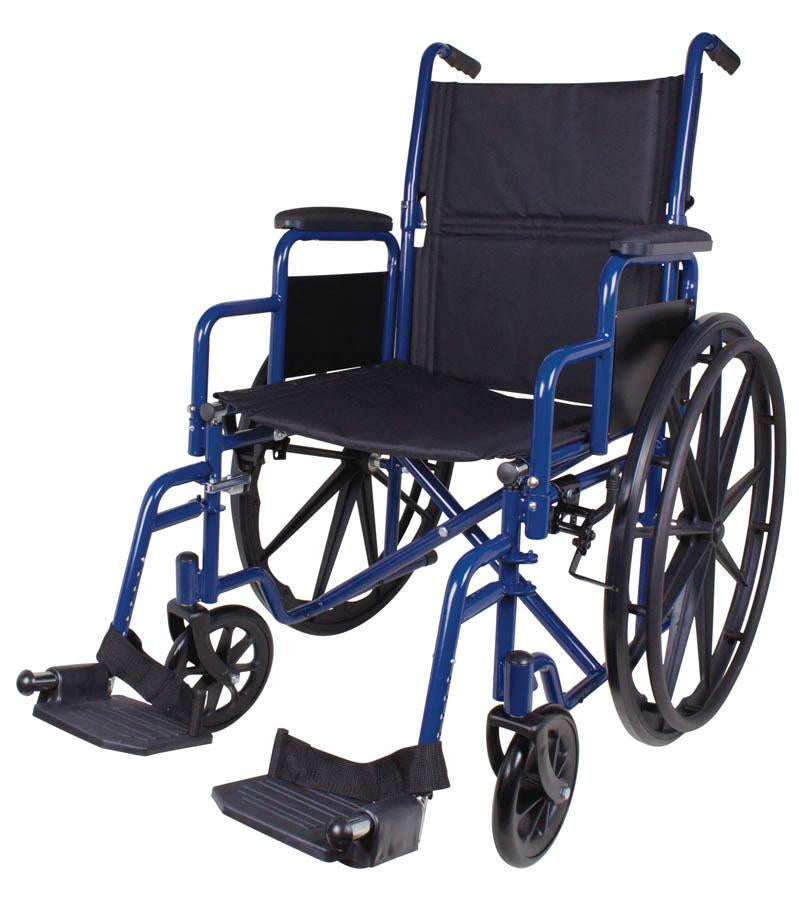
Standard
- Most common
- Inexpensive
- Accommodate basic wheelchair needs
- Can be self-propelled
- Fit the average adult
- May not accommodate those in need of a smaller, larger, or more heavy-duty chair
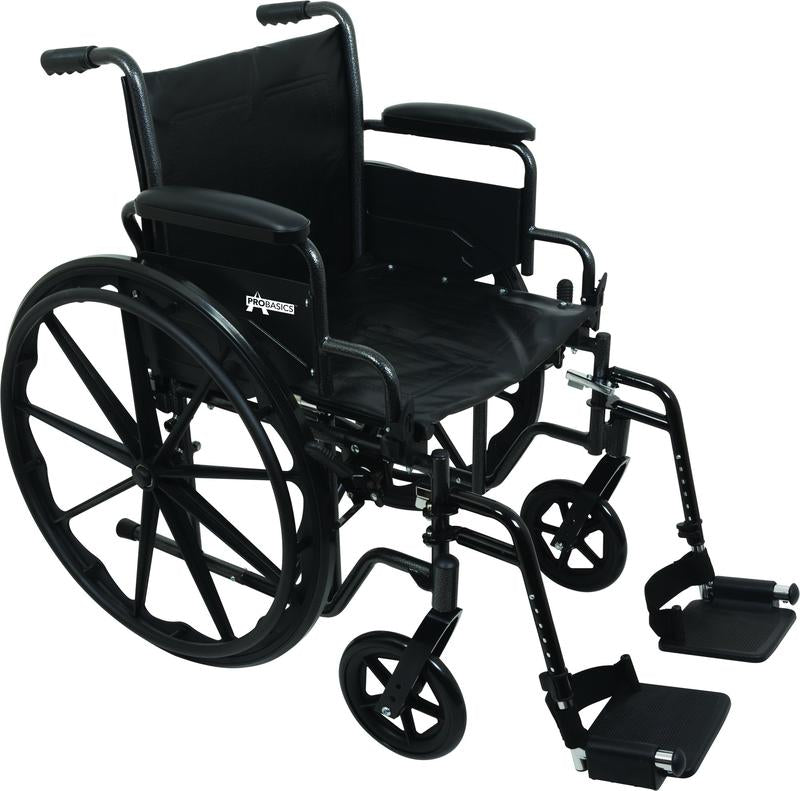
Hemi Wheelchairs
- Seat-to-floor height can be adjusted lower if necessary
- Can be self-propelled
- Accommodates users who wish to propel with their feet
- Accommodates shorter users whose feet may dangle in a standard chair
- May not help those in need of a smaller, larger, or more heavy-duty chair
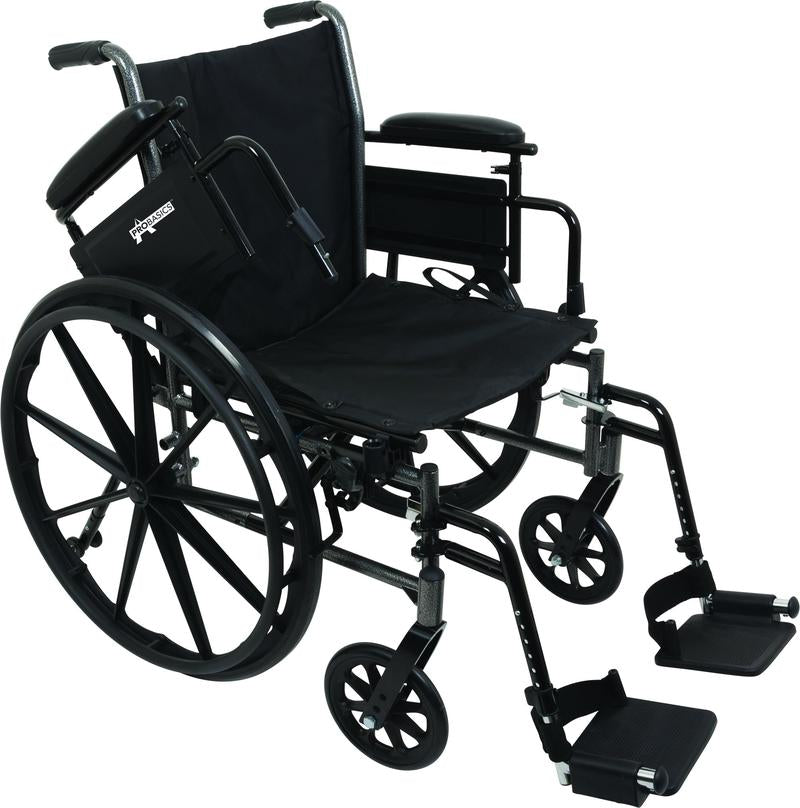
Lightweight/ultralight
- Lighter than standard chairs
- Easier to self-propel and maneuver
- Can be folded or disassembled for easy portability
- May also be hemi-height adjustable or heavy-duty
- Reduces strain and accommodates users with less upper body strength
- May not help those in need of a smaller or larger chair
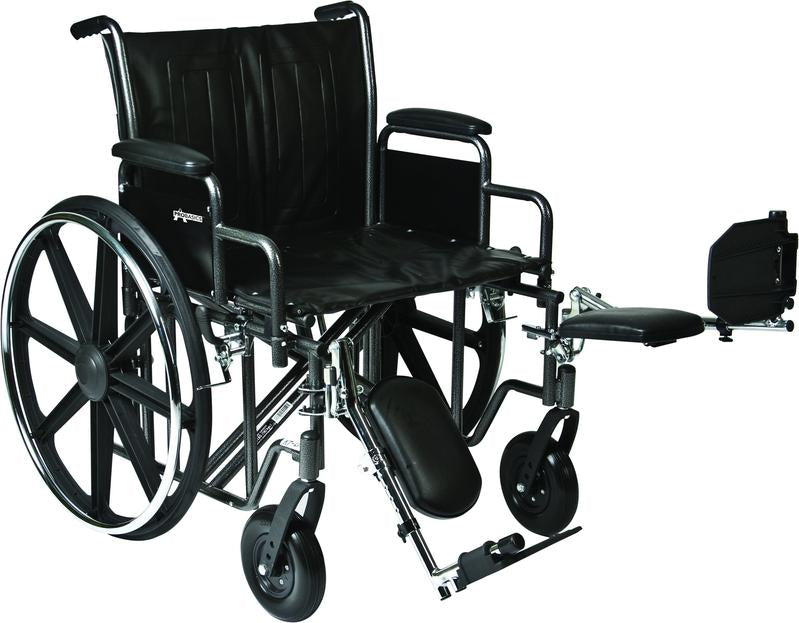
Bariatric
- Higher weight capacity
- Larger seat dimensions
- May also be hemi-height adjustable
- Can be more expensive
- Wider, may not fit through more narrow passageways
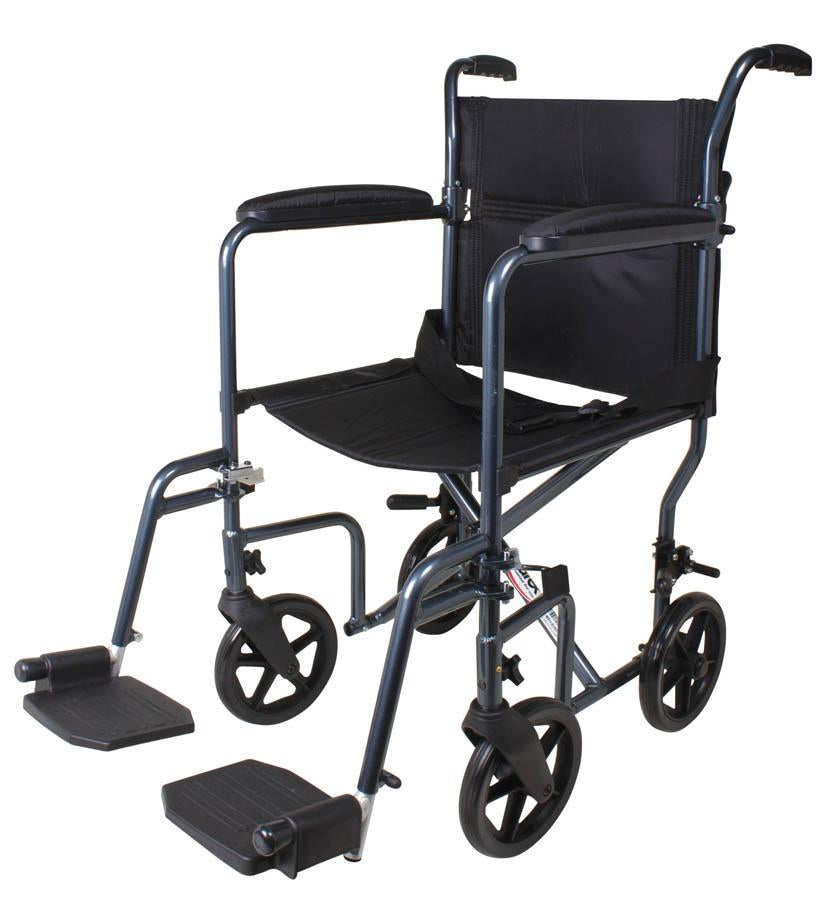
Transport
- Lighter and more compact
- Smaller back wheels than a standard wheelchair
- More portable
- Can be cheaper
- Best suited for travel, short trips out of the house, or part-time use
- Cannot be self-propelled, designed to be propelled by a companion
- Usually best to have in addition to a standard wheelchair

Reclining
- Features backrest that safely and comfortably reclines
- Reclining can reduce pressure and make medical care easier
- Often features a removable padded headrest for added comfort
- Can be helpful for those with sleep disorders or who have frequent seizures
- Can be self-propelled
- Usually larger and less portable
- Can be more expensive
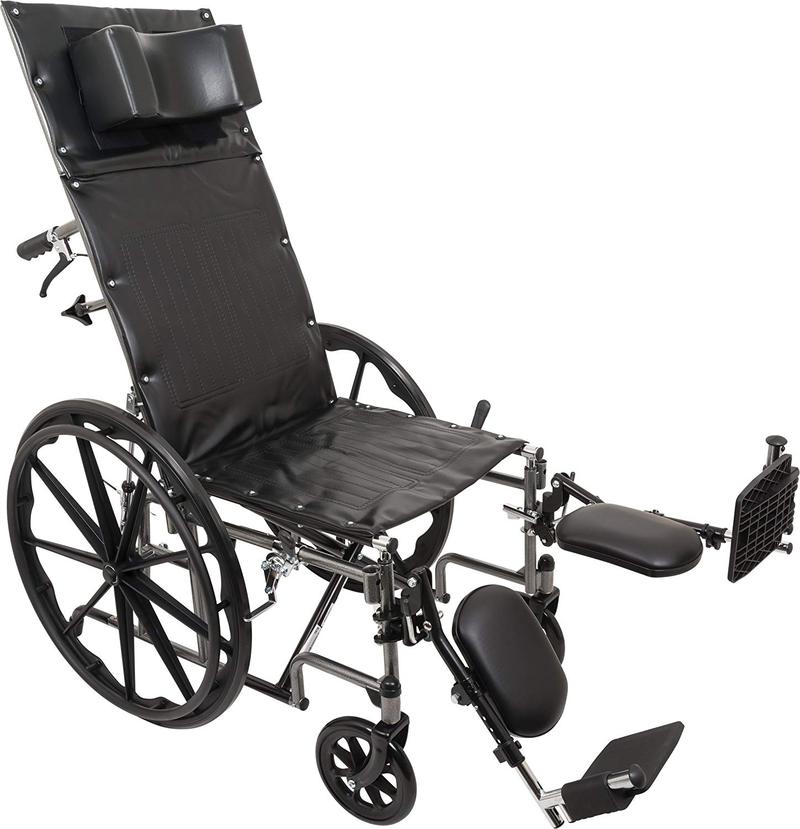
Tilt in Space
- Features seat, back, and leg rests that safely recline together while keeping knees bent
- Reclining reduces pressure on the back and other areas and aid in respiratory function
- Reclining can make medical care and feeding easier
- Can be helpful for those with sleep disorders, spine conditions such as scoliosis, or who have frequent seizures
- Best for those who are unable to sit upright for extended periods
- Usually larger and less portable
- Can be more expensive
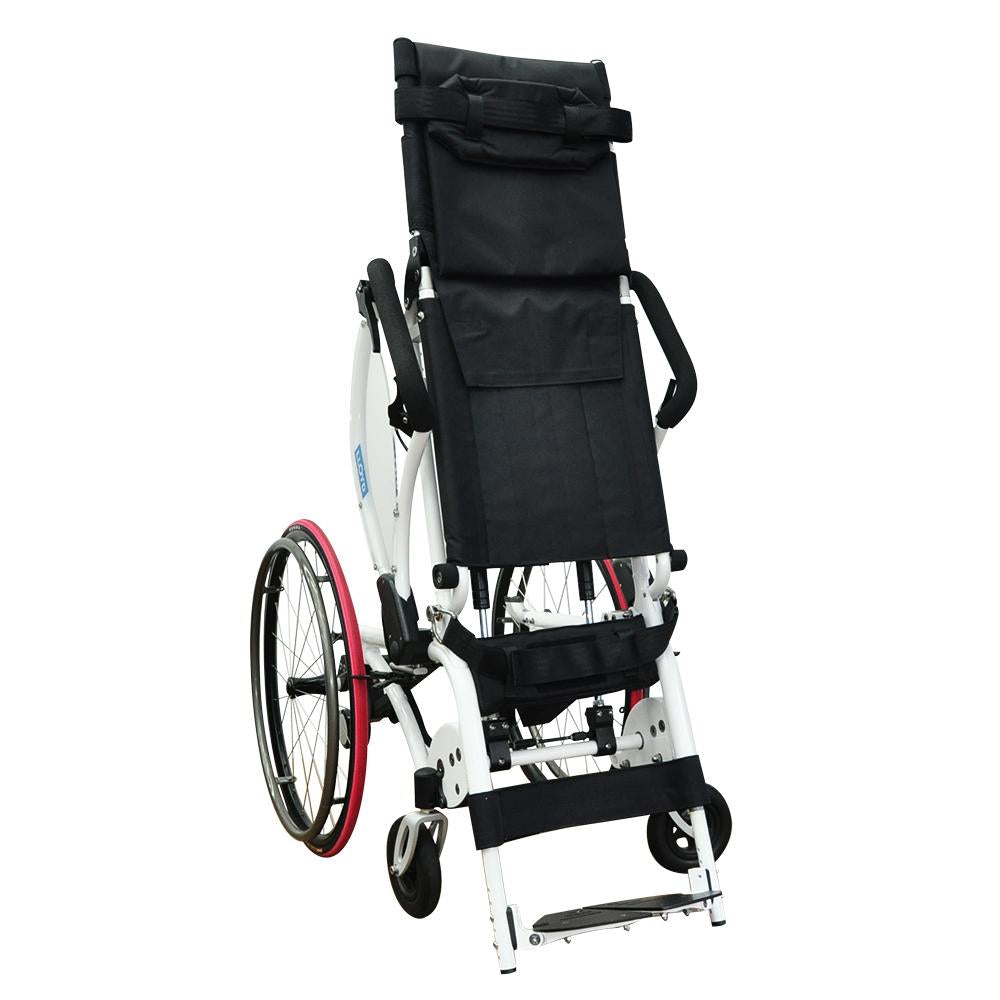
Standing
- Allows users to propel the chair in either a sitting or standing position
- Reduces pressure from sitting and aids in circulation
- Can be larger and less portable
- Can be more expensive
Steel vs Aluminum Wheelchairs
The most common types of wheelchairs are made from steel, aluminum, or a mix of both. Each material has pros and cons, making knowing which will meet your needs necessary.
Steel
Most standard manual wheelchairs are made from steel. It's a stronger material that can hold more weight. Its durability and strength make it an excellent choice for bariatric and heavy-duty wheelchairs.
However, steel is heavier than aluminum, making it harder to transport. A steel wheelchair may not be ideal if you're weak in strength.
Aluminum
Aluminum wheelchairs, on the other hand, have the advantage of being durable yet lightweight. If you need a wheelchair that's easier to maneuver and transport, aluminum is best.
However, these wheelchairs can be more expensive than steel and may have a lower weight capacity.
Both materials are durable and make for a functioning, safe wheelchair. Your choice will largely depend on your budget and any accommodations you may need your wheelchair to provide.
Parts and Accessories
In addition to materials, it's essential to consider a wheelchair's parts and accessories. These can make a substantial difference in usability and comfort.
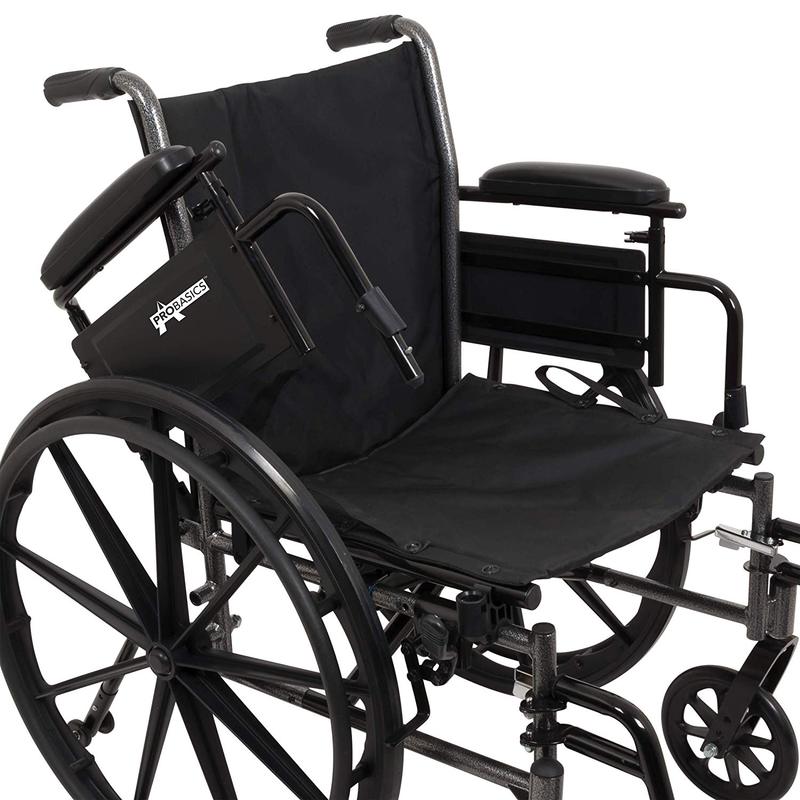
Armrests
Proper arm support is crucial for comfortable wheelchair use. High-quality wheelchairs feature durable padding to support your arms without causing any discomfort.
- Desk-Length Armrests: These are an excellent choice for those who spend extended periods sitting at a desk or table. They provide ample support for your elbows, making sitting at a proper distance from a table more comfortable.
- Full-Length Armrests: If you need more arm support, consider using full-length armrests. They also make it easier to transfer in and out of the chair.
- Height Adjustable Armrests: If you require custom support, consider a wheelchair with height-adjustable armrests. These come in either desk or full length and make finding the best height for arm support easier.
- Flip-Back/Removeable Armrests: Wheelchairs with this armrest type make it easier to transfer in and out of the chair. They allow you to slide off the seat, making transfers more manageable. Flip-back armrests offer the advantage of flipping up to get closer to a table while still within reach.
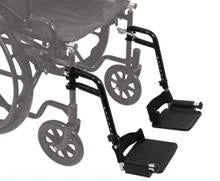
Leg Rests
Leg rests are crucial for maintaining good posture and preventing your feet from dangling. If you have limited leg mobility, adjustable leg rests may be optimal.Most wheelchairs feature three styles of leg rests: elevating, swing-away, and flip-up
Elevating Leg Rests
These leg rests have adjustable angles for ideal positioning. Elevating the legs above the heart helps improve blood circulation, reduce swelling, and prevent blood clots.
Elevating leg rests are helpful if you have difficulty bending your knees or need to keep your legs straight due to medical conditions. They can also be beneficial for cast positioning.
However, this style can make it hard to transfer in and out of the wheelchair as they tend to get in the way. They can also make it difficult to get close to tables or counters.
Swing-Away Leg Rests
This style features a swing-away mechanism to make getting into and out of the chair easier. They won't get in the way or impede your ability to get close to a table or desk.
However, the downside of these is they only keep your legs in one position. This may be uncomfortable if you need to keep your legs bent at a specific angle.
Flip-Up Leg Rests
These leg rests have footplates that flip up, making it easy to transfer in and out of the chair. They offer a great balance between elevating and swing-away leg rests.
They're more compact and maneuverable than elevating leg rests while providing good support.
The biggest drawback of flip-up leg rests: they don't offer the same circulation benefits as elevating leg rests. However, for many, their convenience and versatility outweigh this drawback.
A significant benefit all leg-rest styles share is they can be switched out for the other or removed altogether for closer access to desks or tables.
Ultimately, the best type of leg rest for you will depend on your individual needs and preferences. Elevating leg rests may be better if you're concerned about circulation and swelling. If you need a more compact and maneuverable leg rest, swing-away leg rests, or flip-up leg rests may be a better option.
Seat Positioning Belt
A seat positioning belt wraps around your waist to position you correctly in the chair. They offer many benefits, including:
- Improved safety by preventing falls
- Reduced pain and discomfort by enhancing posture and support
- Increased independence by making it easier to sit up straight and transfer in/out
- Improved quality of life by making you feel more secure and comfortable
Suppose you decide on a wheelchair with a seat positioning belt. In that case, choosing one that fits properly and can be adjusted to a supportive length without putting too much pressure on your abdomen is essential.
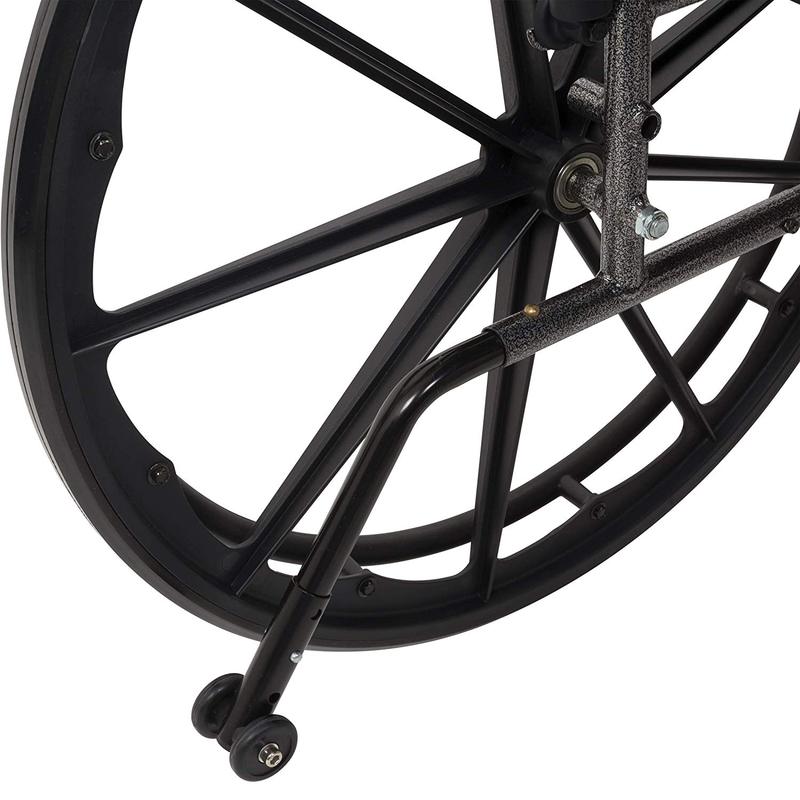
Anti-Tippers
Anti-tippers are devices attached to the rear bottom of the chair to prevent it from tipping and falling backward. They add an extra layer of safety and are beneficial for those prone to falling or struggling to control their wheelchair.
Another great benefit of anti-tippers is they keep the wheelchair stable on elevated surfaces such as steps or hills. There are a few types of anti-tippers to consider:
- Wheeled/Solid Tip: Wheeled tippers roll with the chair when going up steps, whereas rubber tips better stabilize the chair if it tips backward on a slippery surface.
- Retractable/Fixed: Retractable tippers provide less stability but can be flipped up for convenient use, whereas fixed tippers stay in place for better stability but can be harder to maneuver.
Wheels
Your chair's wheels will dictate its performance and maneuverability over certain terrains. Larger, air-filled wheels are ideal for rough outdoor terrain but may not work well indoors. Alternatively, smaller, hard-rubber tires work better indoors and in tight spaces. Be sure to consider where you'll be using your chair and the wheels that are best suited for those conditions.
Seat Materials
The materials of the chair's seat are vital for a few reasons:
- Comfort: The seat must be comfortable to sit on for extended periods. It should be soft for ample cushioning but firm for adequate support.
- Pressure relief: The seat must distribute your weight evenly to prevent pressure sores and discomfort.
- Moisture management and cleanability: A seat that wicks away moisture is ideal as it can prevent you from getting wet or sweaty. This feature makes it easier to clean and maintain.
- Durability: The seat is the most used part of the wheelchair. A durable seat that can withstand being moved around, bumped into, and exposed to the elements ensures long-term use.
Measuring for Your Wheelchair
The ideal wheelchair dimensions ensure not just comfort but safety as well. You'll want your wheelchair to have ample sitting room and provide adequate support.

Overall Width
You must ensure your wheelchair fits through all the necessary hallways and passageways. To do this, measure what you consider to be the most narrow passageway in your most frequented locations, such as your home, school, or workplace.
Ensure your wheelchair's width is less than this measurement by at least an inch. If an overall width is not listed, it can typically be determined by adding 8 inches to the wheelchair's seat width.
How wide is a wheelchair?
A wheelchair's width will vary based on the type and manufacturer. However, a standard wheelchair's width can range from 25 to 36 inches. Power wheelchairs tend to be narrower than manual wheelchairs, starting at roughly 23".
Here are the typical widths by chair type:
- Manual Wheelchair: 25-36 inches
- Power Wheelchair: 23-32 inches
- Narrow Transport Wheelchair: 21-25 inches
- Heavy-Duty Wheelchair: 32-40 inches

Seat Dimensions
You will want your wheelchair seat to have enough space to sit comfortably and safely. It may be easiest to ask a friend or family member to assist you with these measurements.
How to Find the Proper Seat Width and Depth
To find the proper seat width:
- Measure the width of your backside when sitting on a flat surface.
- Add two inches to this measurement for adequate space.
To find the proper seat depth:
- Measure your pelvis to the back of your knees when sitting straight.
- Subtract two inches from this measurement.
Generally, standard wheelchairs come in 16, 18, and 20-inch width options with seat depths between 16 and 18 inches. Bariatric wheelchairs will have larger dimensions, and pediatric wheelchairs will have smaller sizes for greater accommodation. You will want to find a seat width and depth closest to the measurements of your backside and pelvis to your knees.
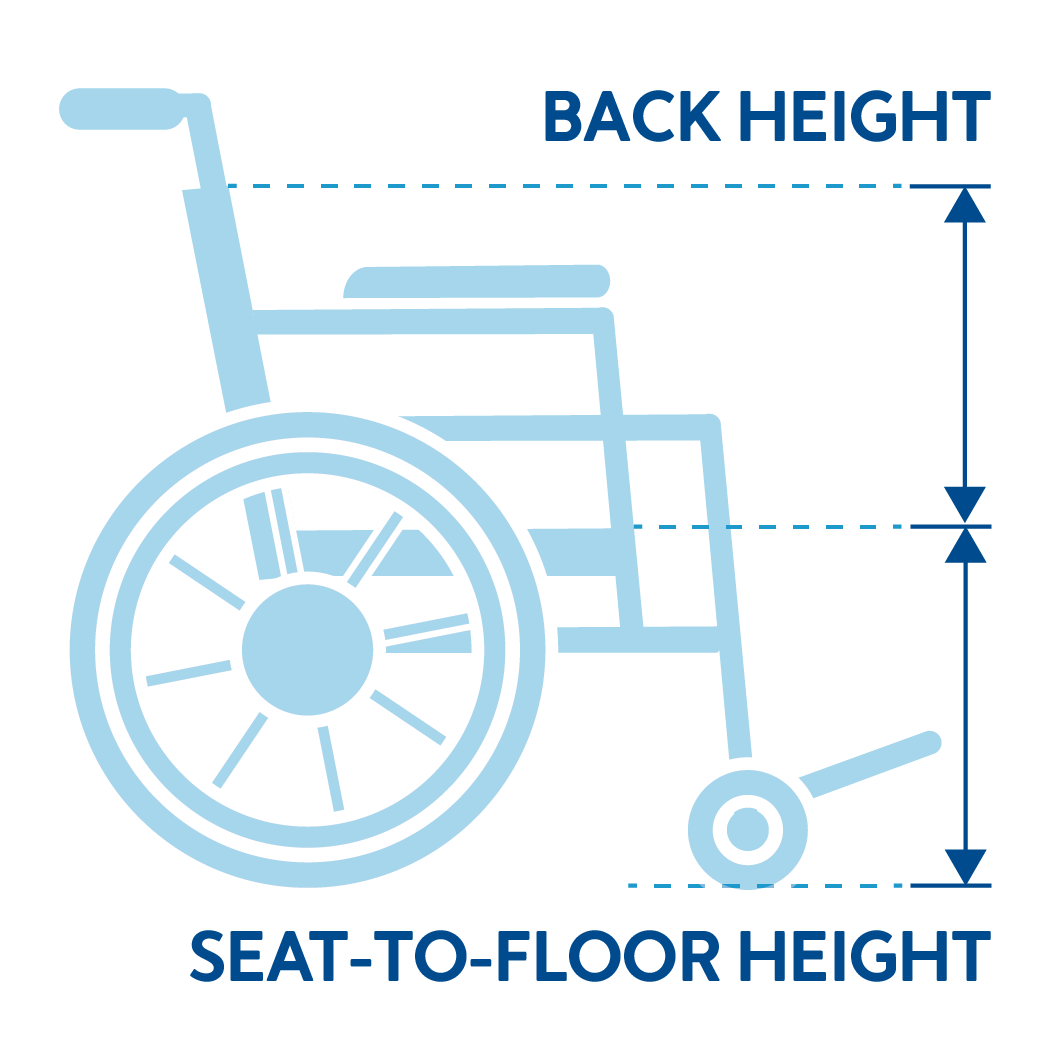
Back Height
Your chair's back height is essential in promoting good posture, comfort, safety, and functionality. While your ideal height will vary based on your needs and requirements, there are a few general best guidelines to follow:
- A back height reaching the bottom of your shoulder blades is a good starting point.
- Consider a higher back if you have upper back pain, neck pain, or poor posture.
- Consider a lower back height if you'll be using your chair in many tight spaces, you are active and need an easier way to transfer in and out, or you prefer a minimal design.
To ensure you can sit back comfortably in your wheelchair, have a friend or family member measure from the top of your shoulders to your pelvis in a seated position. Most back cushions are available between 16 to 20 inches; you will want to choose one closest to this measurement.
Seat-To-Floor Height
The correct seat-to-floor height will leave your feet a comfortable distance from the floor without causing them to dangle or drag. To find the right height:
- Measure the length of your lower leg, from the back of your knee to the bottom of your feet.
- Your ideal height should be about two inches more than this measurement.
If you plan on self-propelling with your feet, your seat-to-floor height should be slightly lower than this measurement to be comfortable.
Some wheelchairs allow you to adjust the seat-to-floor height to accommodate shorter users or those propelling with their feet.

Seating and Positioning
When you sit in a wheelchair for long periods, you may become uncomfortable and shift into abnormal postures to alleviate any pain or pressure. However, this can cause further injury. It's vital to sit with the correct posture.
To sit correctly in your wheelchair:
- Sit back in the chair to evenly distribute your weight along your thighs and buttocks.
- Sit upright with your shoulders back, not slumping or leaning to one side.
- Support your arms and feet with armrests and leg rests.
If you cannot hold this position comfortably, your wheelchair measurements may not be correct. Be sure to refer back to our "Measuring for Your Wheelchair" section to ensure that this is not the case.
If it isn't the wheelchair's measurements causing the issue, you may need a back or seat cushion. Back and seat cushions can help you stay comfortably seated in this correct position while preventing injury and pressure sores.
Seat Cushions
Wheelchair cushions add comfort to your chair and help to prevent pressure sores and other adverse side effects of sitting for long periods. There are many different shapes and types to choose from. This variety helps ensure you receive the proper support and comfort.
Foam Cushions
These are the most basic and economical cushions available. They are best for those not at risk of pressure ulcers or skin breakdown. They provide support and structure while also adding comfort to your wheelchair seat.
Gel Cushions
These cushions have a layer of gel chambers that provide relief in high-pressure areas to prevent pressure sores and skin breakdown. They also keep the skin cool while providing the necessary support and comfort.
Air Cushions
These cushions have air cells that equalize your seated position and reduce pressure points to aid wound therapy and prevent pressure sores. They also maximize blood flow and help keep the skin cool and dry.
Cushion Style Variations
Renting vs Buying
Once you've chosen the suitable wheelchair, cushion, and accessories for your needs, it's time to decide: Should I rent or buy my wheelchair?
Renting is a popular option among wheelchair users, especially those who only need one for a short amount of time. If you only need a wheelchair for a special event or vacation or while recovering from an injury or surgery, renting is likely the better option.
It can also be expensive to maintain and repair a wheelchair you own. Renting a wheelchair saves you from this stress, as rental companies usually cover the cost of maintaining it.
Because of this, rental costs can quickly add up and become expensive. If you need a wheelchair for an extended period or will be a full-time user, it's wise to use that money to invest in purchasing one of your own. This way, you own it, can use it whenever you want, and can even sell it and make some money back if the time comes when you no longer need a wheelchair.
One thing full-time users might consider is trying both options. Trying both can be especially helpful for those unsure whether they've found a suitable wheelchair and don't want to commit to buying one yet. Renting allows you to try out different types and sizes of wheelchairs before purchasing the one that feels best for you.
| Renting | Buying |
|---|---|
| ✔️ Cheaper for short-term use ✔️ Maintenance costs are usually covered ✔️ Allows you to try a chair out before buying | ✔️ Cheaper for long-term use ✔️ Allows you to use the chair whenever needed ✔️ Chair can be sold to regain a portion of the initial investment |
Wheelchair Comparison Chart
Conclusion
Needing a wheelchair can be stressful for many reasons, but we hope this guide has helped alleviate some of the stress of finding a suitable wheelchair for you. If you have any further questions, consult with your doctor, or feel free to speak to a Carex representative.
About the Author

Stephanie Schwarten is a freelance writer and editor with a Bachelors degree in Professional Writing. She specializes in content marketing as well as both developmental and copy editing.
About Carex Health Brands
Carex is your one-stop shop for home medical equipment and for products that assist caregivers with providing the best possible support and care for their loved ones. Carex Health Brands has been the branded leader in in-home, self-care medical products for over 35 years. Our goal is to improve the lives of our customers by bring them quality products that bring dignity back to their lives. With our three nationally distributed brands, Carex Health Brands serves national, regional and independent food, drug and mass retailers along with wholesalers, distributors and medical dealers.

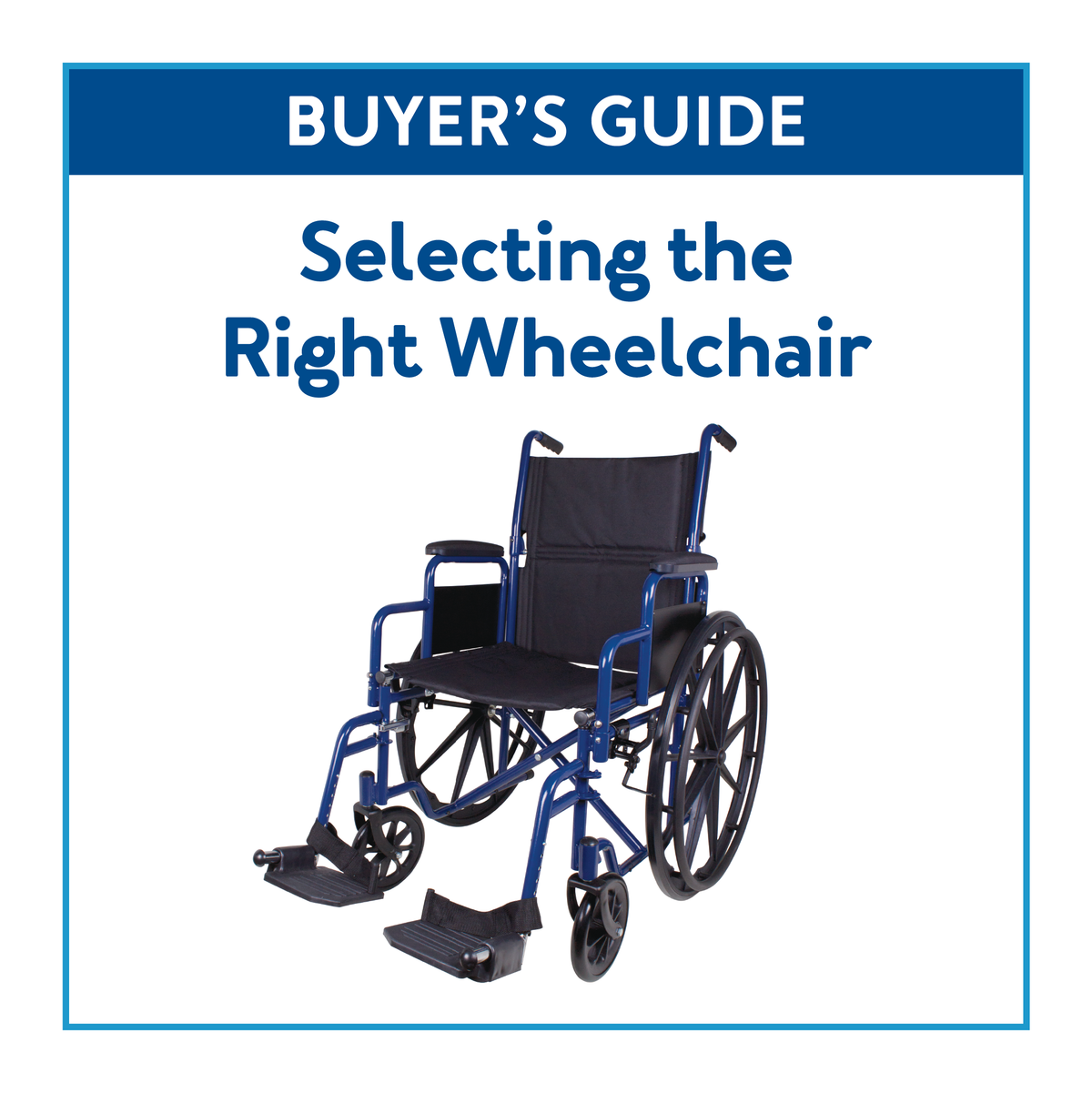



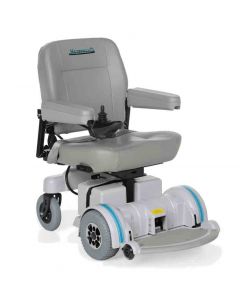



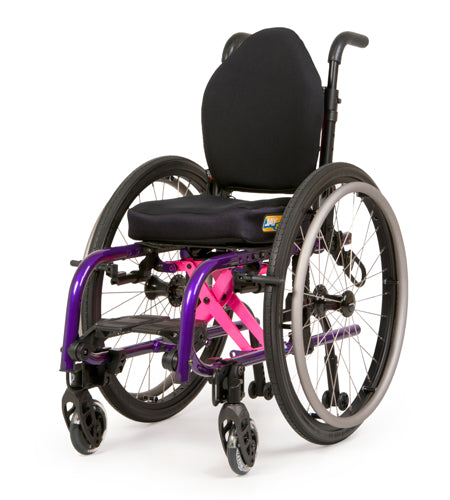
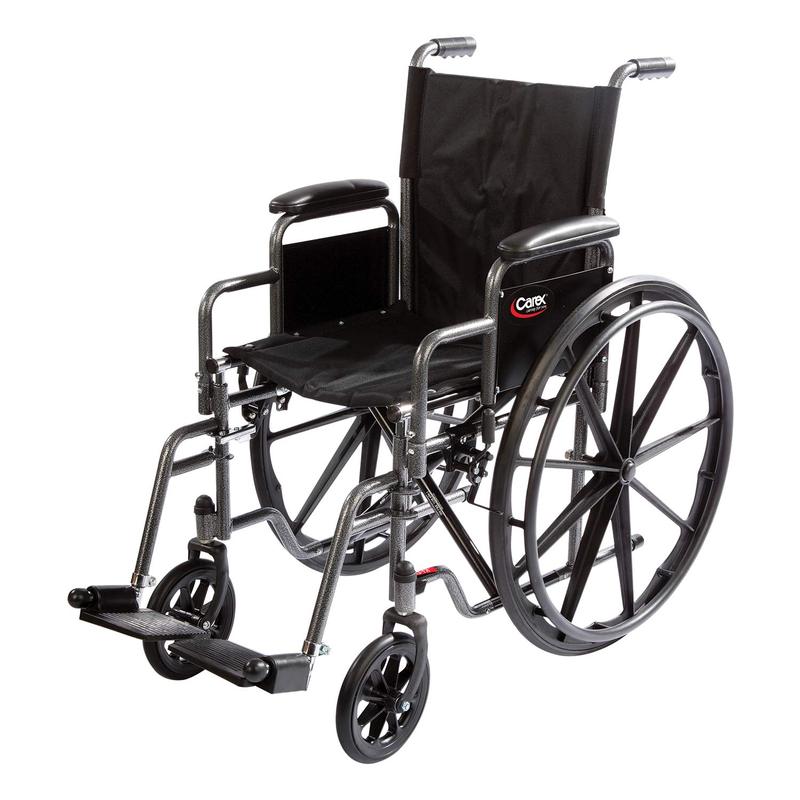
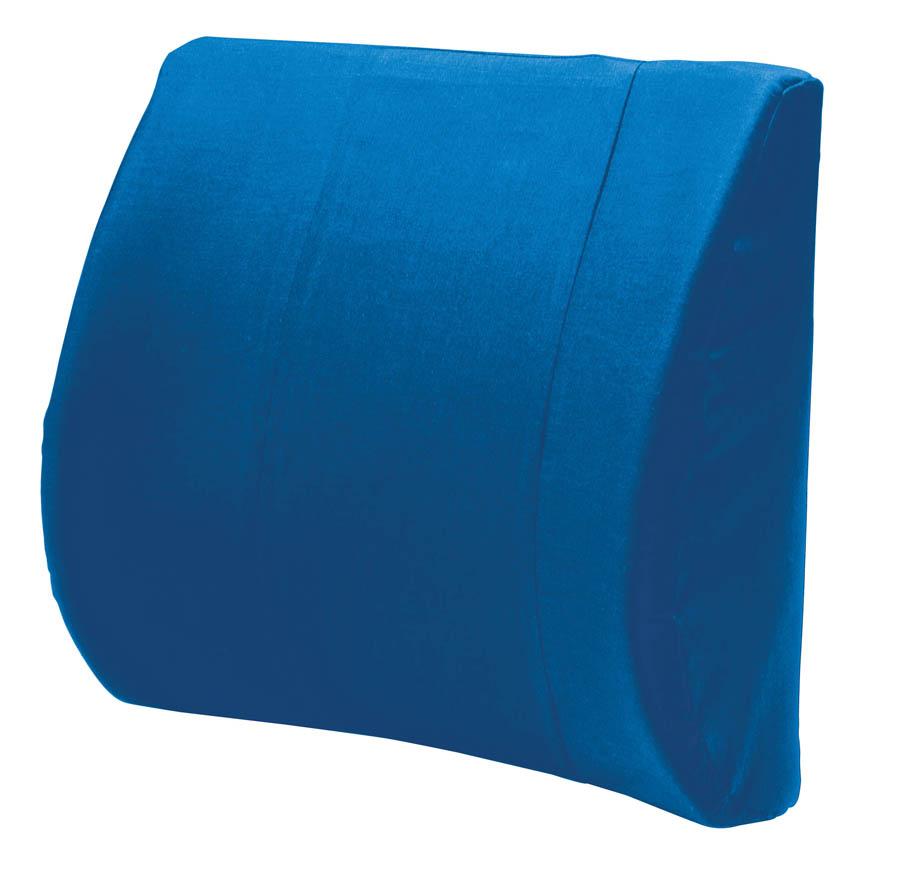

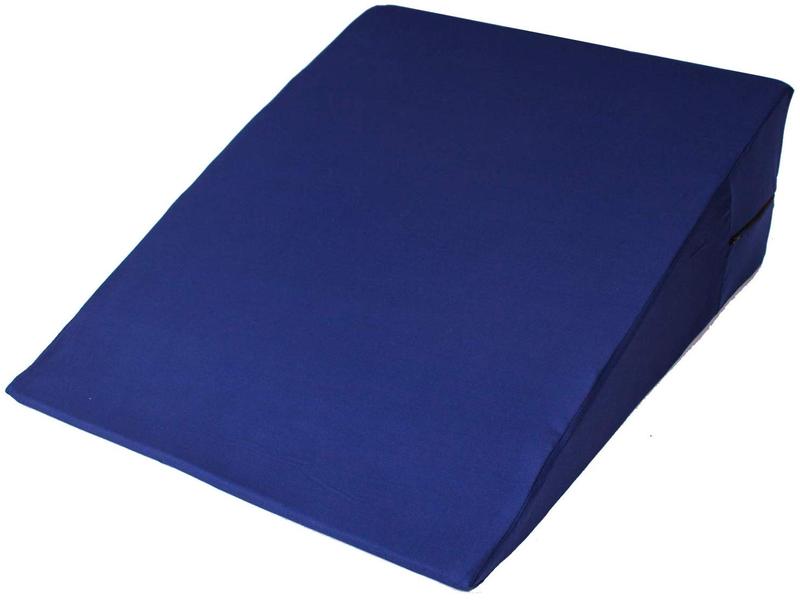
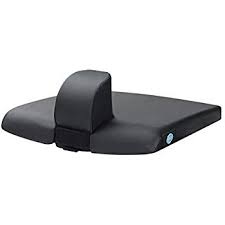


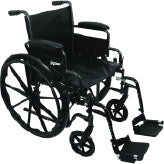

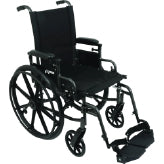
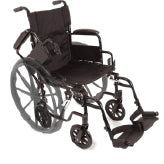


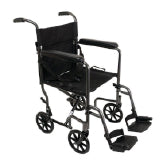
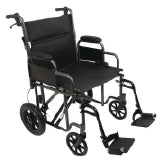
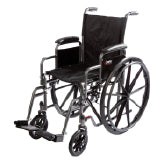
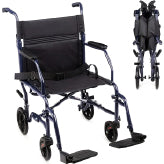

I like that you said that I should consider renting a wheelchair if I’m only going to use it for a short while. My mom will undergo surgery for her hip fracture soon, so we’re planning to get a wheelchair for her since she won’t be able to walk for a while. I’ll try to search for used medical equipment for sale online and see if buying a secondhand wheelchair is cheaper than renting one for months. Thanks for this! https://apexxsolutions.com/services/